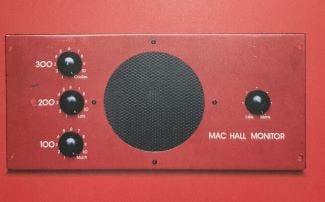World Radio Day
The old wireless is hanging in there
World Radio Day as adopted by the United Nations in 2012 is tomorrow (February 13th). The day was chosen to mark the creation of United Nations Radio in 1946. (The US has its own National Radio Day in August)
According to Statista there were 965 radio stations in Canada in 2022, with roughly 75% being commercial and the rest were not-for-profit, community, campus, etc. Revenues in the radio business are declining, but the medium remains popular for news and 67.5% of Canadians listen to radio in their vehicle. The Pew Research Center reported last year that 8 in 10 Americans aged 12+ listened to plain old terrestrial radio in a given week.
Despite the challenges, why does radio endure?
For a start, it has been around in Canada since 1918 when the Marconi Wireless Telegraph Company of Canada started broadcasting in Montreal. The equipment needed to listen to radio was and still is, basic kit and you don’t need to update your receiver every few years to hear the latest news, weather, and sports. It has a deep reach into remote areas without cell towers, cable or WiFi. Those 2 factors alone ensured radio gained a foothold in rural areas and Canada’s North where it was often the only way to get vital information. When I was in Croatia towards the end of the conflict that enveloped the region, one of the partners I was working with was developing a ‘radio station in a box’ because as long as there was a power source (including batteries) the operator could broadcast information needed by people caught up in the war. It is a highly portable medium you can listen to virtually anywhere and has easily adapted to online streaming and podcasting, expanding its reach even further.
Radio is also a very personal medium. It can create a sense of place, spark a connection with the audience without elaborate equipment, tell a story, and deliver music, arts, and drama. In 1938 using basic audio tools and coupling creativity with good writing, Orson Welles scared listeners across the United States with his live War of the Worlds broadcast. Even with good video technology, deep fakes and artificial intelligence, that feat could not have been done through other mediums, then or now. Radio pulled it off with a actors, microphones, and a Foley Board.
As “We Make Radio” (a history of the University of Calgary campus radio station and fittingly here is a radio interview about the station) said “You don’t feel so alone with the radio on”. True for radio and true for quality podcasts. Like many campus stations CJSW went from closed circuit on-campus broadcasting in the late fifties to a full fledged FM, 18,000 watt broadcast station that has become an integral part of life on and off campus. There are about 200 community and campus radio stations in Canada – some volunteer run, others relying on funding drives and philanthropic funding to stay on the air. While they often cater to niche audiences such as one of my former employers CKUA radio in Alberta does, they have a “small but determined” (thank you WKRP in Cincinnati) audience base who cannot find what they want though commercial broadcasting or free streaming services.
One of the biggest threats to terrestrial radio right now is in-car radio (primarily AM band). It is free, portable, universal, and doesn’t require a high-tech and often expensive, ‘entertainment centre’. Even though in-car listening has gone up, it is disappearing from new cars.
The future of terrestrial and digital radio comes down to the basics.
Good stories. Whether that is news, sports, or current affairs it takes a well-crafted piece of writing and voicing to get a message or information across. That includes podcasting, because sorry to say, many well-intentioned podcasters miss the mark by a wide margin.
Creative and smart programming. Music especially must have an audience in mind, but information radio has to follow the same mantra. Know and respect your audience.
Have a purpose. Radio is not about simply riffing to fill time or joking around with a guest or co-host. You can find that at the local bar or on social media.
Unfortunately even with the basics in place, economics must (and always has been) be part of the equation. That hit home in Canada last week when Bell Media announced some drastic changes. Those changes include layoffs, ending several television newscasts, and selling 45 of its 103 regional radio stations. If there was any ray of hope for radio in the announcement it was that one of the buyers, Vista Radio, said there would be no closures or layoffs. The president of Vista said it was because Vista pays attention to its local communities and does not use centralized programming.
As UNESCO points out as part of its 2024 World Radio Day theme, radio has a powerful impact on news and is a grassroot tool to connect communities and underserved groups.
The first radio signal in 1894 travelled only 25 meters. Today you can pick up a radio signal from across the ocean.
Here’s to the power of radio.




